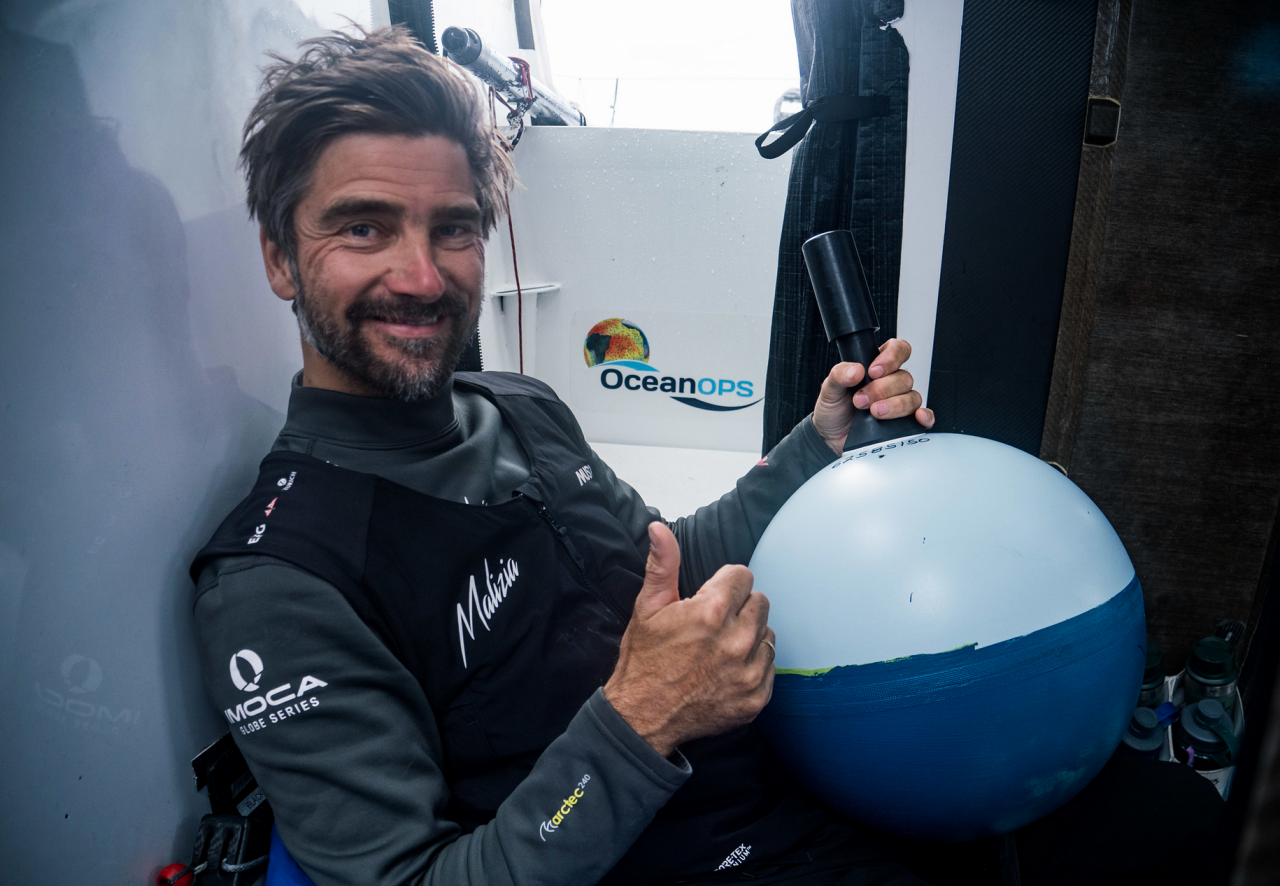Boris Herrmann and Will Harris Deploy Scientific Instrument off Portuguese Coast

On day four of the Transat Jacques Vabre race on board Malizia - Seaexplorer, Boris Herrmann and Will Harris deployed a scientific instrument called a drifter buoy off the coast of Portugal at 37 degrees North.
he device will live for around 700 days and autonomously sends data on atmospheric pressure, sea temperature and ocean currents to scientists on land. This data is crucial for the World Meteorological Organization (WMO) and for climate scientists to better understand the future of the weather and the role the Ocean plays in climate change.
This is the second time the duo have deployed a drifter float during a Transat Jacques Vabre race, the first time being in 2019. This year alone the pair deployed two drifters in The Ocean Race taking their total to three deployed devices in 2023. These devices weigh around 25 kg and are 40 cm in diameter the reason they are so important is that they are one of the only options available to get permanent and consistent in situ atmospheric pressure measurements.
At 17:49 UTC today on 10 November 2023 at 36 degrees N and 13 degrees W Boris Herrmann and Will Harris deployed the drifter buoy into the Ocean, to watch this moment see the Youtube video.
The drifter floats are key for gathering weather forecast predictions which are also what we use to navigate during our races. They also further our climate change mission by adding to the pool of scientific data our scientists use to monitor the role the Ocean plays in mitigating climate change. Although they don’t measure the C02 content in the Ocean, like our onboard Ocean Pack, the data they gather still allows scientists to draw conclusions on the state of the Ocean’s health. To understand more about the drifter buoy you can watch this video created by the Bureau of Meteorology which also clearly shows you the 15 meter long floating anchor that steadies the position within the Ocean.
During the Transat Jacques Vabre race, six drifters will be deployed from six different IMOCA race yachts. The aim is to deploy them in six different locations along the race route where there are currently no instruments and so are scarce in data. The race deployment project is coordinated through the IMOCA class which plays a key role in coordinating the racing yachts with Meteo France, IOC-UNESCO and OceanOPS.
There are already around 1300 drifter buoys in the Ocean worldwide and several hundred need to be deployed each year to keep up with the data requirements of the WMO. The data is transmitted from Iridium every hour enabling the ability to track its last 15 day path. Interestingly, almost all of these drifters end up on shore and can be collected, although a very small number do become lost in the Ocean.
To follow the race click here for our ships tracker.
Teams info
After a stunning 2025 season Sam Goodchild is the IMOCA Globe Series Champion for the second time
After a long season at the top of the IMOCA fleet that featured three race wins, Great Britain’s Sam Goodchild is for the second time in three years the IMOCA Globe Series Champion.
•••Quel rôle peut jouer la course au large dans la transformation du transport international ? Avec Pie…
Pour ce 10ᵉ épisode de Transitions, enregistré au Havre lors du départ de la Transat Café L'Or, nous recevons Jeremy Pochman, PDG de 11th Hour Racing, et Pierre-Antoine Morvan, responsable du pôle course au large et supe…
•••